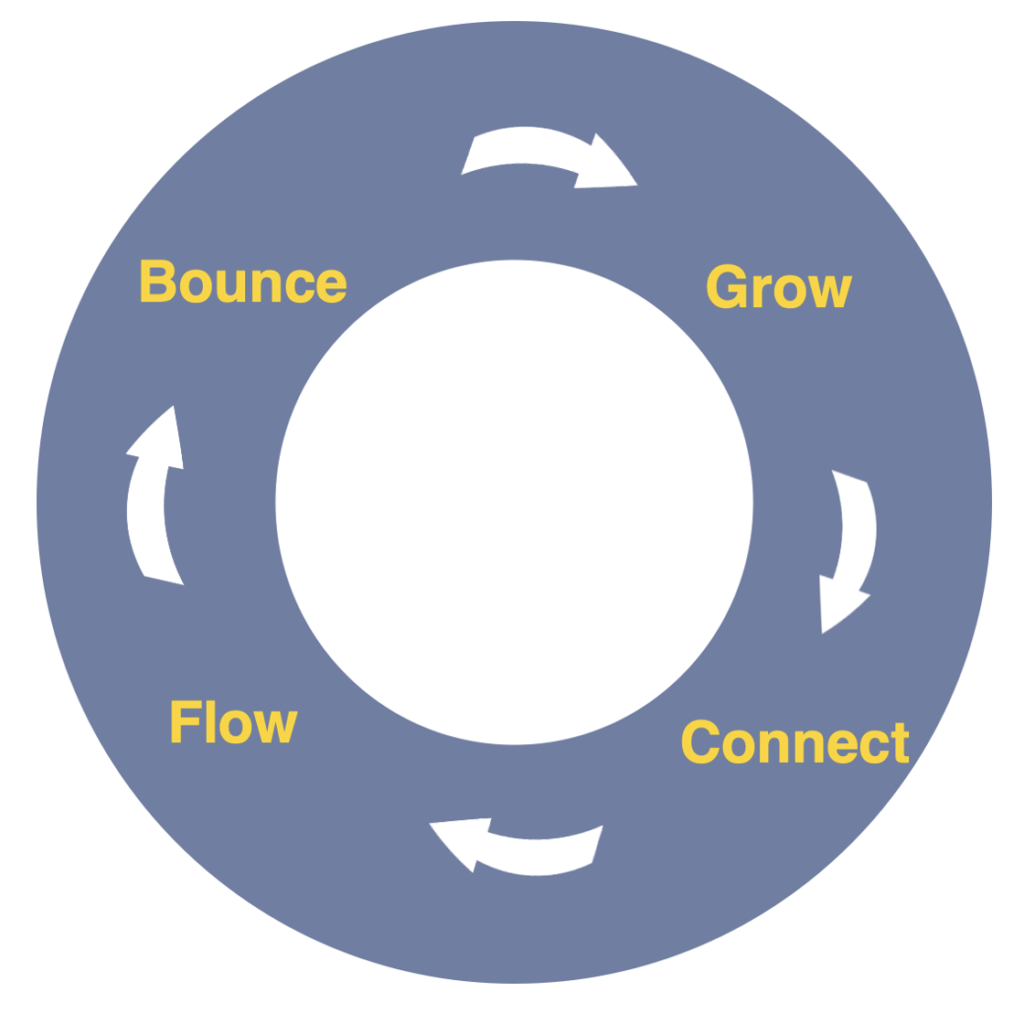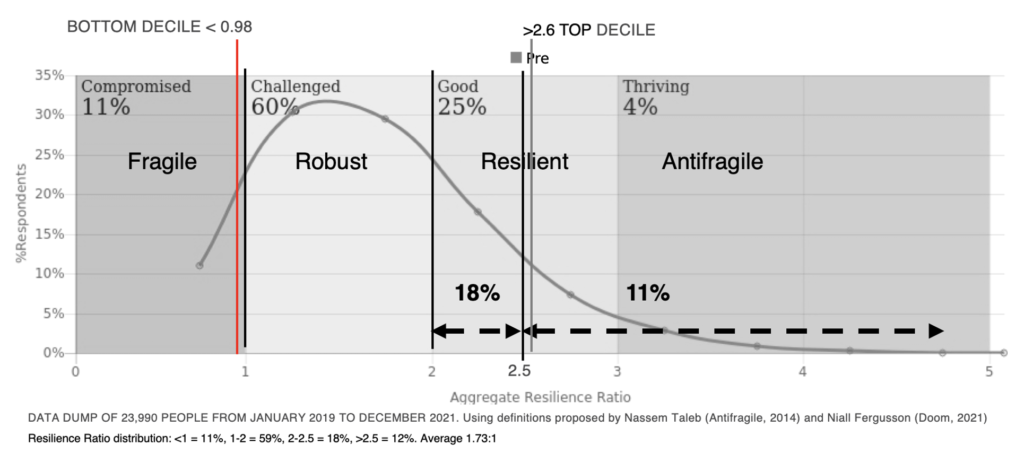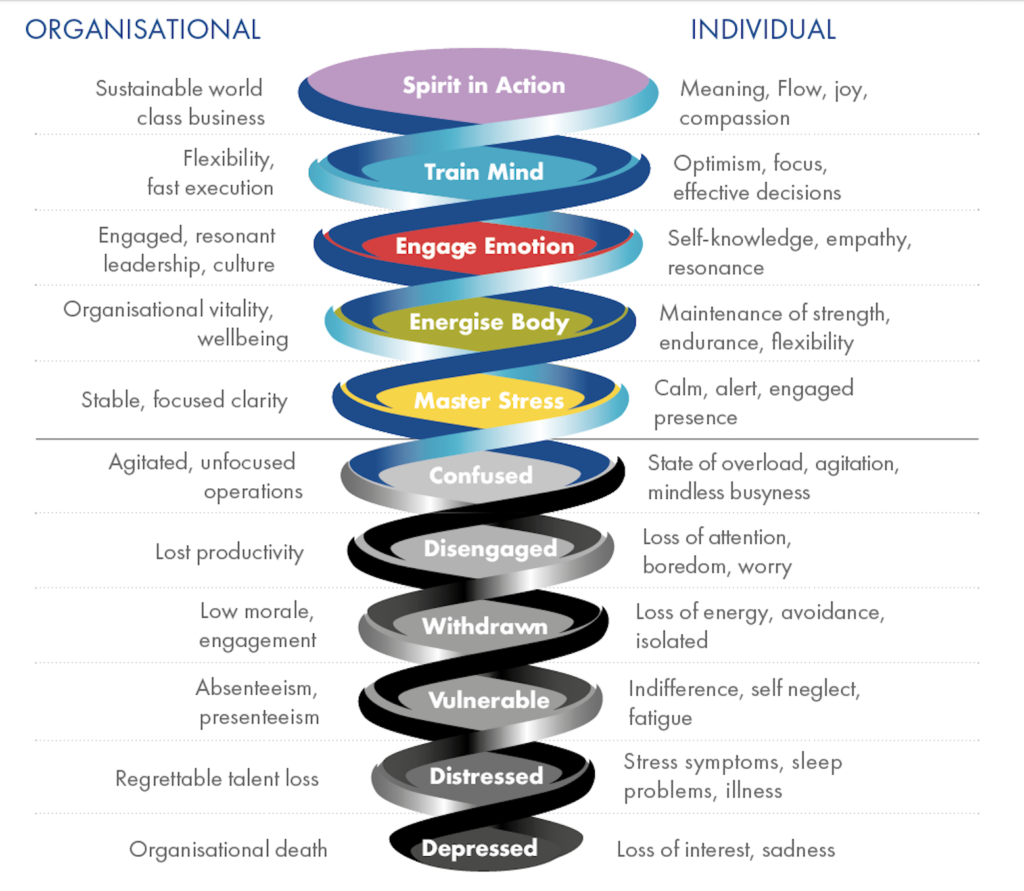
What is Resilience?
Right now, for you, humanity, and the planet, resilience is vital to survival and essential for a good life. We must understand and master it. However, defining resilience is tricky.
What do we mean by resilience?
The first challenge is to separate our human resilience from others—ecological, climate, soil, supply chain, technology, engineering or construction. A recent article by McKinsey & Co, does not include people under resilience. Most authorities mean people when they use the term as we do in this article.
Current definitions:
Oxford Dictionary:
- The capacity to recover quickly from difficulties, toughness
- The ability of a substance or object to spring back into shape; elasticity
Cambridge Dictionary
- the ability to be happy, successful, etc., again after something difficult or bad has happened
Merriam-Webster
- the capability of a strained body to recover its size and shape after deformation caused especially by compressive stress
- an ability to recover from or adjust easily to misfortune or change
Wikipedia (psychological resilience)
- an individual’s ability to adapt in the face of adverse conditions or
- the ability to cope mentally or emotionally with a crisis or to return to pre-crisis status quickly
American Psychological Association
- Resilience is the process and outcome of successfully adapting to difficult or challenging life experiences, especially through mental, emotional, and behavioral flexibility and adjustment to external and internal demands
Nassim N Taleb
- Fragile, Robust, Resilient and Antifragile. See our Antifragile Summary.
For those looking for a more academic analysis, see the European Journal of Psychotraumatology or Multisystemic Resilience.
Trauma or Growth Focus?
The second challenge is deciding if you want to bounce back or forward. Some believe resilience is to bounce back from adversity, and others believe that we bounce forward and grow in adversity. Reflect on your own life challenges to see what is true for you.
This decision is weighty with profound consequences for parenting, education, business, medicine and government. On one extreme, in a dangerous world, safety is the priority (see Safetyism). On the other, the risk is the path to growth and reward. Where are you?

Life needs us all. Risk-takers drive evolution, innovation and excitement. They live with failure, injury and even death. Safety protagonists may save us in a crisis. They live with restraint, repetition and stunted development. Early humans roaming the veld were lean, fit, agile, social and vigilant, but many died. Modern humans, safe in their homes, cars and work, live longer, but many with loneliness, obesity, diabetes, anxiety and depression.
While many choose extreme positions on this spectrum, all are valuable. The challenge is to know when and where to move. For example, resilient children must take risks and negotiate difficulties. If we are injured, following proven safe practices can reduce suffering and accelerate recovery. Resilience is knowing when to press into risk and when to be cautious.
Our Evolving Definition
The Resilience Institute currently defines resilience as four learned sets of skills:
- Bounce: to bounce forward fast in adversity and learn,
- Grow: to actively strengthen physical, emotional and mental resources,
- Connect: to respect and understand self, others and nature
- Flow: to excel in life and work by matching our skills to challenges

All four are tightly linked. In fact, they operate in a cyclical rhythm, as below. When we achieve flow—a high-performance state—we exhaust resources. A period of bounce to recover, refuel cells and rejuvenate is necessary. As every competitor knows, you become stronger when you combine hard work with smart rest. Muscles grow, emotions are regulated, and the mind is better prepared. Now we are prepared to connect with others and the situation in a calm and trusting state—which is the best way to trigger flow. Repeat.
Clearly, resilience is not a steady state. There are times we feel more resourced and times we feel depleted. Nassim N Taleb’s terms include:
- Fragile: breaks under adversity or crisis
- Robust: resists and survives in adversity at personal cost/distress
- Resilient: adapts to change, adversity or crisis
- Antifragile: capitalises on adversity or crisis by becoming more capable
Measuring Resilience
These terms can be mapped against our resilience ratio. The ratio is the total of one’s strength divided by the total of one’s risks. The figure below maps this ratio for 23,990 people showing how resilience is distributed in a population. We know that the top 10% (antifragile) score above 2.6 and the bottom 10% (fragile) score under 0.98. The average resilience ratio for this sample is 1.73.
Note that 60% of the population is in ‘Challenged’ or ‘Robust’. Remember, this means we can resist change but in significant personal distress. Many people mistakenly think that is resilience. Resilience is the ability to adapt, remain calm and be effective under the pressure of change or adversity. To be ‘Antifragile’, one requires strong foundations of resilience.

The human condition is continuous change. At times we are compromised or fragile—as newborns, sick, injured or in old age. A civilised society provides support and protection. At other times we are thriving or antifragile—we have the resources to achieve our goals and support others. We can all move in a more resilient or antifragile direction. This requires resilience—the skills that allow us to bounce, grow, connect and flow.
Greatness is the opposite of Depression – Peter Koestenbaum
Another way to view this is what we term altitude. There are times we feel up and positive, and things go well. At other times we are low and depleted. Life is suffering. At the core, resilience is the ability to move up.
To move up, we must recognise when we are down. Then we must know what to do and how to do it with skill. When we are suffering through adversity, we call it ‘bounce’. To grow is to know how to sleep, be fit, master emotion and train the mind. All of these lead to rapid upward movement.
Once we grasp this basic idea, the obvious goal of life is to travel as high as we reasonably can. The signal is joy.
To help people on this path, we use our Diagnostic and Development Model—a guide to understanding where you are and what to do to move upwards.

The Spiral is evidence-based. There is good science to support each of the levels. It is integral in that it embraces and connects physical, emotional and cognitive elements and respects and includes multiple world views. Most importantly, it is practical in that at each level, there are specific skills that can be learned and mastered. No matter where we find ourselves, we can always work upward.
This is very different to catastrophic terms like burnout. People don’t burn out. Yes, we slide down the spiral, lose perspective and feel depleted. But we are evolved to bounce and grow from the experience.
As one learns to master this concept and the drills that underpin upward movement, confidence and optimism increase. Moving up and down the spiral is life’s normal ebb and flow. No need to despair, get angry or panic. Just take the next step to move up. The more skilful you become, the faster you move up through bounce, grow, connect and flow.
Summary

Do you have a definition of resilience that works for you?
Can you connect the learned abilities to bounce, grow, connect and flow?
Are you fragile, robust, resilient or antifragile?
What is your altitude? Can you feel it?
Do you know what you should do next to rise to greatness?
